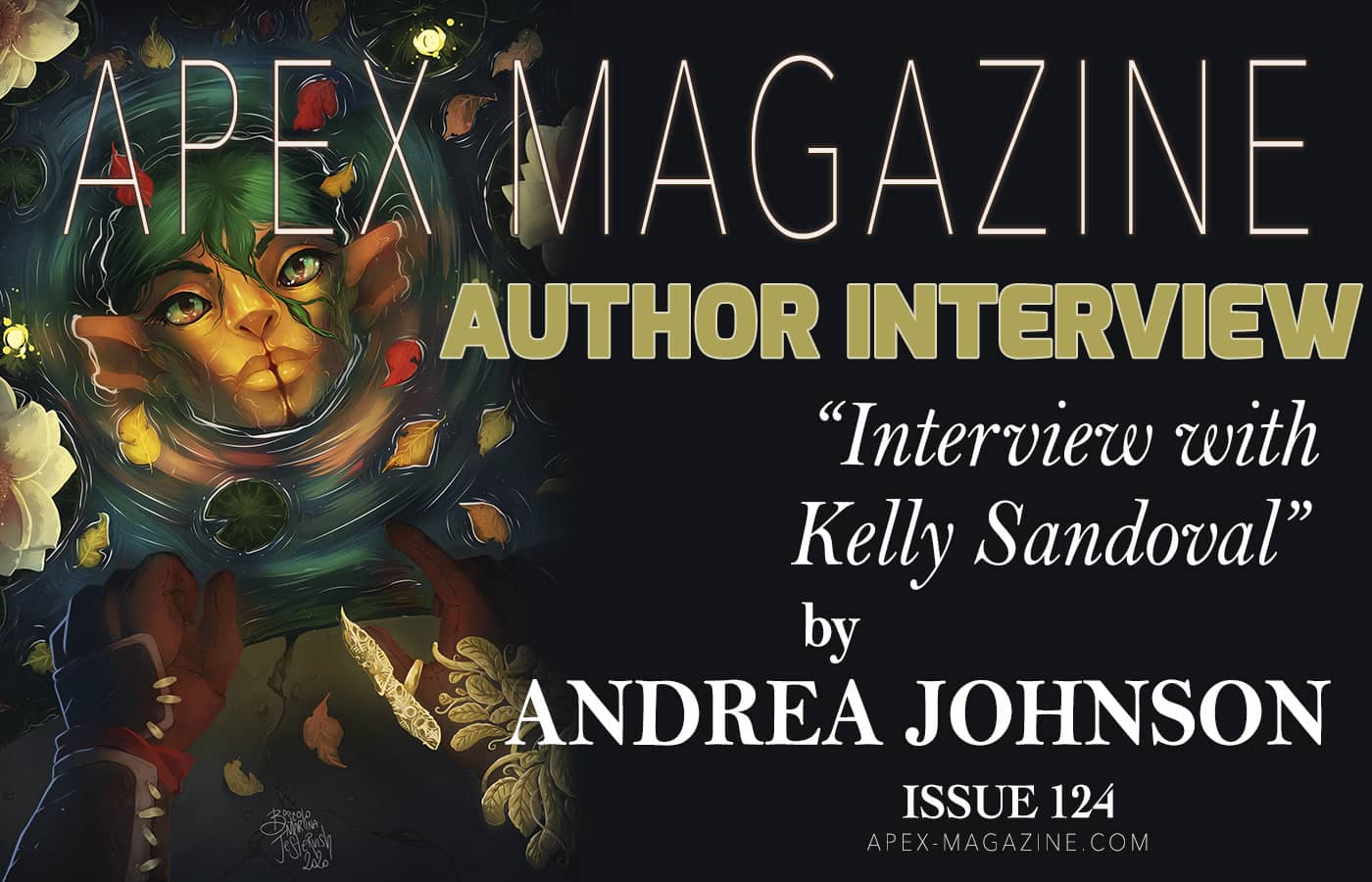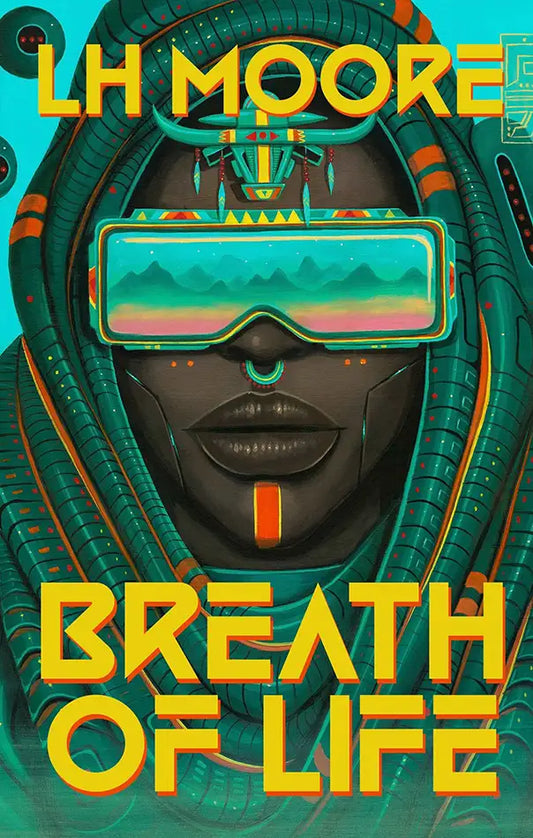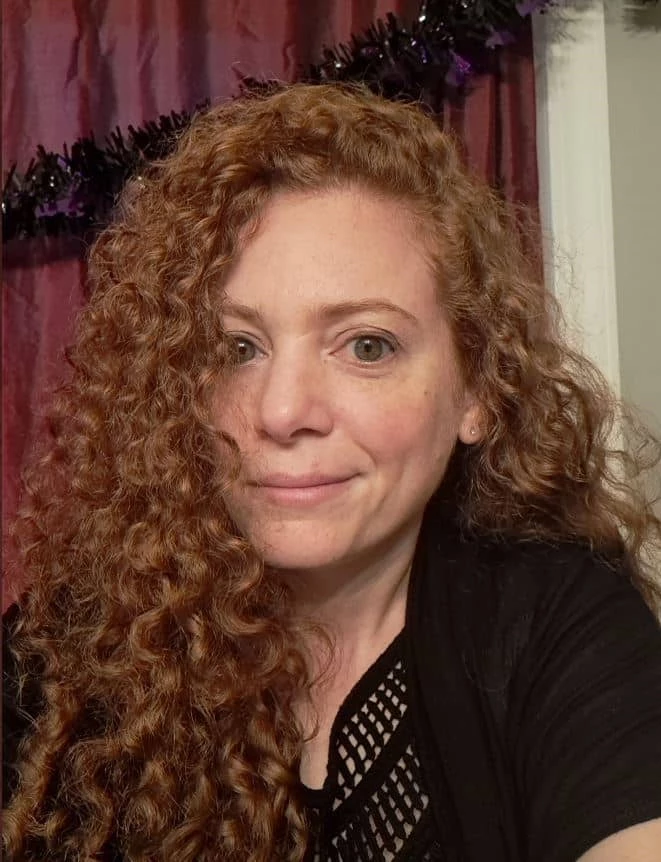
A hundred blessings on the parents who raise twins! Two babies to diaper, two mouths to feed, twice the laundry, twice the sleepless nights. Exhausted parents of twins know they love their babies equally, and they know their children will have a best friend who is always there for them. Or at least that’s what television taught me.
In Kelly Sandoval’s short story “What Sisters Take,” Jessi and her twin sister Claire love each other, but it’s a strange kind of love. Of course they love each other, they are sisters! Even when they are a little mean to each other, even when they play pranks on each other, even when they help each other navigate the high school dating scene, even as one is only keeping the other alive as a source of food, they still love each other, because that’s what sisters do.
From Jessi’s point of view, “What Sisters Take” is a story of waiting to die. From Claire’s point of view, it is a story of the one thing allowing her to stay alive. As Sandoval mentions below, Claire can choose to be nice and choose when to be nice, because, among other reasons, she faces no consequences for choosing to not be kind. Jessi, on the other hand, doesn’t have that freedom. When there is a power imbalance that intense, is that love? Or is that just waiting for the other shoe to drop?
As you read this story, I want you to think about your relationship with your siblings. If you are a parent, I want you to think about your children while you read this story. A question I kept asking myself (and then I asked Sandoval) was “Why doesn’t Jessi tell a grown up what’s going on?” Parents, would you believe your kid if they said your other child was feeding off them and would eventually kill them? That is certainly not something a good child would say about their sibling! You did not raise your children for them to come to you with such lies! Fear not, Sandoval offers some tips on how to avoid this exact thing, at least if you know what to watch for.
Kelly Sandoval’s work has been published in Uncanny, Grimdark Magazine, Strange Horizons, Daily Science Fiction, Intergalactic Medicine Show, Asimov’s,and Shimmer and reprinted in various anthologies including Best American Science Fiction and Fantasy, and she is one of the senior editors/publishers of Liminal Stories. She’s not known for writing happy, optimistic stories, she’s known for writing darker stories that edge into horror as they creep under your skin. She was kind enough to talk with me about the dangerous power dynamic in “What Sisters Take,” what might have happened if Jessi asked for help, her experiences as an editor, and some observations on parenting.
Her written fiction might be creepy, but her webcomic Parents vs Powers is delightful! When you’re done chuckling at Parents vs Powers, you can learn more about Sandoval and her work at her website kellysandovalfiction.com or by following her on Twitter where she is @KellyMSandoval.
Ready to learn more about a twisted sister? Read on!
APEX MAGAZINE: Where did the idea for this story come from?
KELLY SANDOVAL: Sometimes, an idea or an image gets stuck in my head, and it keeps emerging in my writing until I find the place where it fits. I have half a dozen discarded stories that include a scene of a girl sitting on a bed, burning off her feathers. In most of those, sisters play an important role. While I can’t say where that initial image came from, I can say that this is a story that I needed to write. But it took years of feeling out the shape of it before I found the right one.
In my early drafts of “What Sisters Take,” Claire is the POV character. I was interested in her feelings about her own monstrousness, her use of a person she loves. But I think, in society, we prioritize the stories of the powerful. Claire gets to feel guilty because she’s the one in control. Jessi doesn’t have that luxury. Once I started considering the story from Jessi’s POV, it all came together.
AM: Jessi realizes at a young age that she’s trapped in a power dynamic with someone who can kill her. Her defense mechanism is to be as nice as possible. What does that kind of childhood do to someone?
KS: Jessi’s niceness is her way of trying to maintain a level of control over her life. Claire has all the power, so Jessi needs to believe that her behavior, in some way, controls Claire. Jessi has learned to manipulate others from a place of weakness, and that habit will be with her for a long time.
AM: Claire is different than the others, she’s privately kind to her sister and only takes what she needs to survive. Why make her different? What’s the point of being kind when you’re a being like Claire?
KS: I read an article years ago about a lioness who kept adopting prey animals. It talked about how the lioness had stopped hunting to protect this baby antelope she’d taken. She even returned it to its mother so it could feed, then chased the mother off when it was done. When another lion ate her baby antelope, she attacked it and spent days grieving. Then she went and found another baby antelope to take care of. The article told the story in a way that made the lioness a sort of tragic figure. So nurturing and self-sacrificing! Except, she stole the babies. She put them in harm’s way.
Claire is a bit like that. She’s kind, sure, but kindness is a choice she has the luxury of making. It’s easy for the powerful to be kind. Claire’s kindness does cost her, but she’s the one who decides whether that cost is acceptable. She determines what’s “fair,” and her sister never gets a vote.
“What Sisters Take” is about love and it’s about power. Claire loves Jessi, but she also feeds on her. The question that Claire, Jessi, and the story grapple with is whether the one makes up for the other. What does love mean when there’s such an intrinsic, pervasive power imbalance?
AM: I asked myself “Why doesn’t Jessi tell someone?? Like her parents?” and my answer was “No one would believe her, and even worse, they’d say she was a horrible sister.” If you were writing the parents’ guide to “how to tell if your child is a cuckoo,” what sorts of tips would you include?
JS: Even if Jessi told her parents, and if they believed her, I’m not sure that it would help. They’ve raised Claire. They love her. I don’t know that they’d be willing to simply let her starve. After all, if Jessi really is a good, loving sister, she should want to help Claire, shouldn’t she?
Let’s see, some questions parents should ask themselves if they suspect their child is a cuckoo:
• Does your child become ill or listless when they’re separated from their sibling for more than a day?
• Do you have an overwhelming urge to care for one of your children, even when it requires you to neglect the needs of the other?
• How many children do you have? Are you certain? Have you counted them lately?
AM: You recently started a webcomic called Parents Vs Powers about first-time parents whose daughter has superpowers. How did you get the idea to start this webcomic, and why pivot from short fiction to comics?
KS: I’m not a visual person, but my husband is an artist, and we like to do projects together. Our major project, just now, is raising our toddler. And we both needed a way to process the weirdness of being parents. Given our different skill sets, a webcomic was a natural fit.
The webcomic is nice because it lets me do something light and a little silly. My short fiction tends to be pretty heavy, and that’s very much my natural mode. I’ve never felt comfortable writing happy, optimistic stories, though I love to read such stories and think they’re valuable. Parents Vs Powers lets me play in that gentler, warmer space.
AM: You are also a short fiction editor. How has being on the editing side impacted your writing?
KS: When my friend Shannon Peavey and I first started Liminal, our magazine, it was surprisingly detrimental to my writing. I started abandoning my stories if they didn’t feel Liminal enough. As Liminal was my magazine and would therefore never publish any of my stories, this wasn’t a very productive process. Eventually, I realized what I was doing and learned to stop viewing my stories through that lens. It was a rough patch in my writing, but it taught me that a story doesn’t have to fit one specific magazine’s aesthetic to be good.
I am so thrilled to have a story in Apex, but the next story I write probably won’t be an Apex story. And that’s okay. My job is to experiment and explore, not to try to force my writing into a mold. Of course, I try to find homes for all my stories. But the ones that aren’t published are still good stories. (At least, I hope they are.)
AM: Who are some of your favorite writers and artists? Why is their work important to you?
KS: This past year was hard for all of us, I think. So I spent a lot of time buried in comfort reads. Mostly books I knew by heart. Books that felt safe. Lois McMaster Bujold is probably my favorite for that. She’s such a master of character. You feel like you know Miles and Ista. They’re people, struggling to make good choices, against all odds and expectations. I love characters like that. Characters who have every reason to turn cruel or give up but who keep trying anyway.
When I’m not disappearing into a comfort read, I usually prioritize reading the work of my friends. E. Lily Yu’s book, On Fragile Waves, came out recently. She’s an extraordinary talent, and it’s a book that just shines from the first page. I love how her work challenges the reader while also being so lovely that you want to meet that challenge. Malcolm Devlin, who happens to be my absolute favorite short fiction writer, has a novella coming out from Tor.com next year, titled And Then I Woke Up. I was lucky enough to read an early draft, and it is going to ruin people. Malcolm writes with this mixture of genuine tenderness and no-holds-barred honesty that tears me apart every time.












